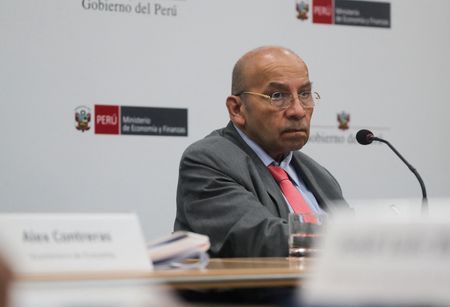LIMA (Reuters) – Peru’s government cut its economic growth forecast for this year to between 2.7% and 3% on Tuesday, citing a slowing global economy and challenges from the opposition-led Congress, which has sought to oust leftist President Pedro Castillo.
The government previously predicted 2022 growth at 3.3%.
“Growth forecasts for this year at least are looking down,” said Finance Minister Kurt Burneo, pointing to delays from Congress in passing government initiatives, as well as slowing Chinese and U.S. economies hitting global commodity prices.
Peru is the world’s second-biggest producer of copper, considered an economic bellwether due to its many uses across industry, transport, communications and construction.
Burneo also broadened Peru’s 2023 growth projection to between 3.1% and 3.9%, from an August estimate of 3.5%.
He announced 10 new measures aimed at promoting growth via public investment, private sector projects and boosting domestic consumption.
In early September, the government launched a stimulus plan of 36 measures, but many were not implemented due to congressional opposition.
“Lack of speed in Congress is definitely delaying the plan’s implementation,” Burneo said, adding that growth was also hampered by social unrest in the mining sector and annual inflation of around 8.3%.
Protests have repeatedly disrupted transport along Peru’s main copper corridor in recent months, causing an extended shutdown at China-based MMG’s Las Bambas mine.
But despite the downwardly revised forecast, Deputy Finance Minister Alex Contreras told reporters the government’s fiscal targets are “guaranteed.”
Last month, Fitch Ratings agency downgraded Peru’s outlook to negative from stable, saying a deteriorating political situation risked losing its coveted investment grade status.
Castillo is facing several criminal investigations and has survived two impeachment attempts in just over a year in office.
(Reporting by Marco Aquino; Writing by Sarah Morland)

